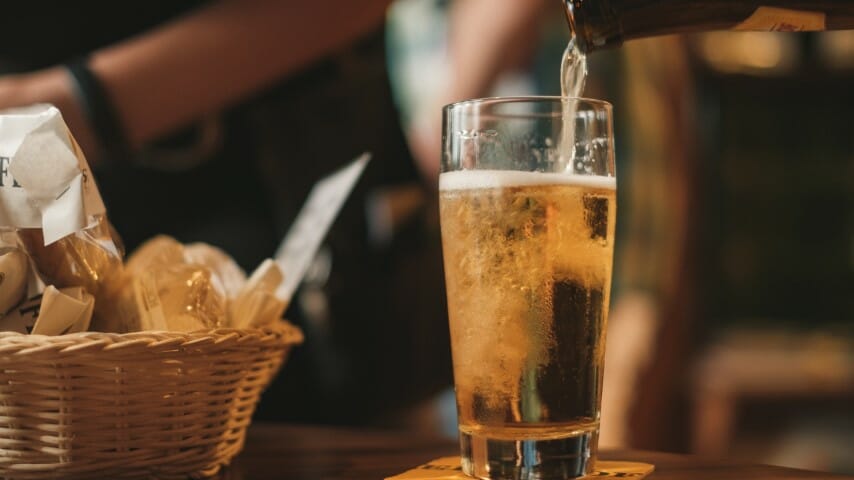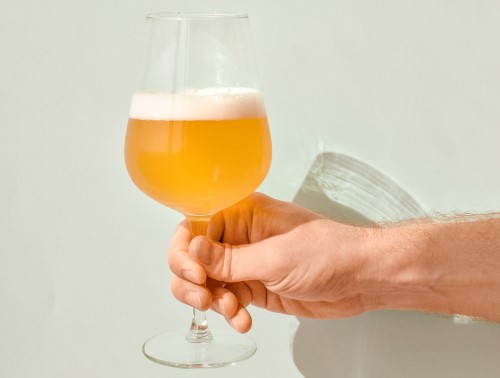Keep Your “Juice” Out of My Damn Pilsner
Photo via Unsplash, Gerrie van der Walt, Paloma A., Marina Zaharkina
I’ve written before, on several occasions, about the encroachment of India pale ale into all other realms of American craft beer, to the point that it’s probably difficult to believe me when I say things like “Honestly, I do enjoy hazy IPA much of the time.” So it goes when you’re an appreciator of a style, but also a vocal detractor when it comes to how that style has evolved, increasingly abandoning subtlety or any modicum of composure for flavors that are ever bigger, louder and more unbalanced. The hazy IPAs that are currently most en vogue tend to wield hop flavors with all the reservation of a small child who found Dad’s handgun under the bed—thankfully, I don’t believe anyone has been killed by “hop burn” just yet, but if that’s possible, one of these breweries is definitely working on a way to pull it off.
The contemporaneous boom in American craft lagers, meanwhile, has been a godsend for a field that has been in constant danger for the last few years of being associated exclusively with a small handful of styles—mostly IPA, adjunct stouts and fruited sours. The surge in availability of styles such as helles, kolsch (an ale, but lager-adjacent) dunkel or pilsner provides much-needed eclecticism in both flavor profiles and assertiveness of flavors, offering a gentle hand to those craft beer drinkers who don’t demand every beer they consume to strive toward being the BIGGEST and BOLDEST liquid available. These are invaluable styles for fostering an appreciation for balance and subtlety—two things that can now be in vanishingly short supply. As new drinkers are still arriving in craft beer (albeit, slower than they once were), these styles are more important than ever for their power to illustrate that not every beer has to advertise the bombast of its flavors in all-caps, impact text.
And that’s why it disturbs me, on some level, to see the same “IPA-ification” creeping into one of the greatest lager styles of all: Pilsner. Although both are styles defined by hop flavors, they have traditionally delivered those flavors in ways that could scarcely be more different. To stuff that style with the modern preference toward juicy American hop profiles is to lose track of what makes pilsner, pilsner. And what you’re left with, of course, is just another spin on IPA, in a market already choked with IPA variants.
It’s the same disappointment you might experience if offered “chocolate,” only to find out that the person was specifically talking about white chocolate. It’s not inherently evil (though some would surely disagree), and it might taste fine, but it’s also unequivocally not really chocolate, just as surely as fruity, juicy, American-hopped lager isn’t really pilsner.
 A real pilsner is a thing of beauty.
A real pilsner is a thing of beauty.
So What is “Pilsner” Meant to Be?
Although the style is now beloved by beer geeks, it’s easy to forget that “pilsner” can still be a pretty confusing, loaded term to the rank-and-file beer drinker. No other beer style has ever had its name dragged through the mud quite like pilsner, after all—it’s a word that was used in conjunction with advertising campaigns for countless watery American adjunct lagers over the years, most notably by Miller Lite, on whose can the word “pilsner” still appears, however inaccurately.
It should go without saying: Those beers aren’t pilsner, and they never were, but they gave Americans a deep-seated conception of what the word “pilsner” would imply that persisted for many decades and colored the perceptions of many craft beer geeks against pilsner in that earlier era. Before the craft beer renaissance, “pilsner” had become indistinguishable from tasteless, watery, boring American macro lager, and it was often denigrated as a result. It took the emergence of beers such as Victory Prima Pils to start resurrecting the style as it was meant to be.
Real pilsner is the farthest thing from boring. These are lagers of great depth and vivaciousness, with expressive noble hop (which is to say, European) profiles and often no shortage of malt for balance. They’re typically bitter, complex beers that are among the most hop-forward lagers in existence. Given that, you can see why American breweries would perhaps wonder “What if I just subbed in some Citra or Mosaic for those noble hops?” This is a pitfall, however, that leads to a beautiful, balanced style being made to taste just like everything else.
One of the things that is so great about the pilsner style, and which I appreciate so much about German and Czech-style craft pilsners made in the U.S. as well, is the way they offer access to a different realm of hop flavor from what is common in pale ale and IPA of any era. Rather than being defined by flavors such as citrus, pine, resin or tropical fruit, the traditional noble hop styles used in German and Czech pilsner (such as Hallertau, Saaz and Tettnang) instead reveal notes that are floral or herbal, spicy or mineral—an entirely different and distinct suite of aromatics and flavors that pair perfectly with the crisp, crackery or slightly malty backbone these beers typically sport. They’re hop forward, but they’re not dominated or overrun by hop flavors. Classic pilsners make concessions to balance, while still tilting in the direction of noble hops and moderate bitterness. Granted, the emergence of newer noble hop varieties have injected some more Western-style flavors into the mix in recent years, but this is still a minor undercurrent.
And to their credit, these styles of classic pilsner (Czech pils and several German substyles) have become very common these days among American craft breweries, which have increasingly turned to pils as a lower-alcohol presence in their product lineups, building a loyal group of lager devotees along the way. The problem comes when breweries decide to treat pilsner as a smaller, more lagery American IPA.
 A few years back, we
A few years back, we  Pilsner, is that you? You look … different?
Pilsner, is that you? You look … different?